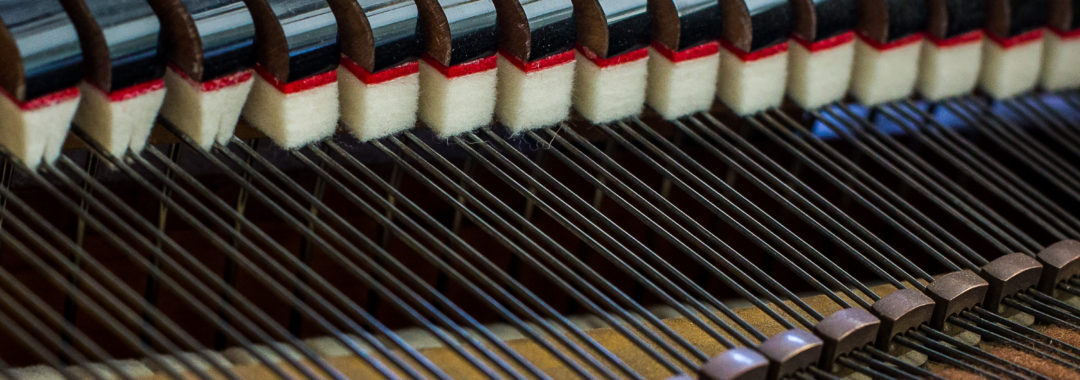
Piano or Keyboard - What will I need?
It is important that you can practise at home in between lessons. For this you will need:
- An acoustic piano or an 88 key digital piano with a stable stand
- A piano stool or seat at the right height (adjustable stools are available)
- A foot rest if a young child can’t reach the ground
- A place to put the piano where it is possible to practise undisturbed
Acoustic Piano
An acoustic piano has 88 keys, 2 or 3 pedals, strings, hammers and dampers.
Sound is created when a key is pressed and the key's hammer strikes the string. When the key is released, the damper stops the string from vibrating. Dynamics (loud and soft) and expression are created by how strongly you press a key - a strong press creates a loud sound, and a light press, a soft sound.
The right hand sustain pedal lets the string continue vibrating when the key is released. The left hand soft pedal makes the sound softer by moving all the hammers closer to the strings. If there is a third pedal in the middle, it is usually a practice pedal which damps the sound down dramatically.
Pianos need to be tuned once a year (usually around $130). They should be placed on an inside wall where the temperature is more consistent as heat, cold and dampness can alter a piano’s tuning.
Pricing can vary enormously from free or under $100 to thousands of dollars. Second hand pianos may need repair and/ or a tune. A reasonable second hand beginner’s instrument can be found in the $500 - $8000 range, though sometimes you can find a suitable one cheaper than this or even for free.
As you spend more money on an acoustic piano, you get better materials which means you get a better sound and playability.
Digital Piano
A digital piano is electronic and is designed to copy an acoustic piano by simulating the hammer action while using a digitally produced sound.
They have what is known as a weighted key action which makes playing a digital piano feel like playing an acoustic piano and allows you to create the full range of dynamics and expression possible on an acoustic piano. Playing on a digital piano builds muscle strength in the same way as on an acoustic piano.
As you spend more on a digital piano you get a better sound and more realistic key action, right up to having an actual piano hammer in the digital piano which triggers a digitally produced sound instead of causing a string to vibrate.
A digital piano will come with a sustain pedal and headphones. It may also have a variety of sounds that can be used. Depending on size, it is usually more portable than an acoustic piano.
A reasonable digital piano with a stand is available new from around $1000 - $2000.
Keyboards
Keyboards are electronic and have 61 or 76 keys (compared to the piano’s 88).
The keys can be weighted/touch sensitive or not weighted.
If the keys are weighted or touch sensitive, the loudness or softness of a note changes based on how you press down on a key.
Keys that are not weighted have a spring action that returns the key to the starting position once it is pressed. This makes the feel of playing light with little resistance which is quite different to an acoustic or digital piano feel.
Keyboards have accompanying rhythms (drum beats), sound styles and accompaniments that can be turned on while you play. Usually you can turn the sound up and down and use headphones.
A touch sensitive or weighted keyboard can be sufficient while you decide if piano playing is for you.
However, moving to a digital or acoustic piano is recommended. You will have the full number of keys available and the correct feel to develop your muscle strength and control, allowing you to be as expressive as you wish.